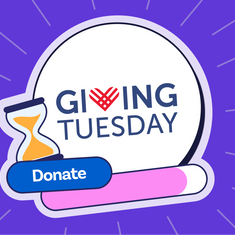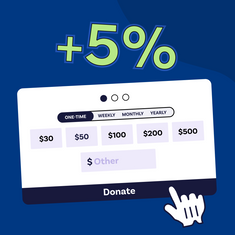
Learn how to write an impactful fundraising letter with our tips on what to include and how to format it, as well as examples to emulate.
We don’t underestimate the power of fundraising letters, and you shouldn’t, either.
Fundraising letters provide you with the perfect opportunity to increase outreach by telling your nonprofit’s story, sharing your needs, and showing donors how they can help or the impact they’ve made.
There are several types of fundraising letters, including:
- Appeal letters
- Donation request letters
- Sponsorship letters
- Thank-you letters
We’ll help you craft an amazing fundraising letter by considering the type of letter you’re writing or who it’s for, keeping your organisation in the minds and hearts of donors and sponsors alike. We’ll also show you a few sample fundraising letters from great fundraising campaigns to spark your inspiration.
Here’s how to write an incredible fundraising letter.
Anatomy of a Fundraising Letter
Here are six common qualities that great fundraising letter templates share:
1. They Provide a Personal Touch
Your letter shouldn’t start with impersonal salutations, like “Dear Friend” or “To Whom It May Concern.” When writing fundraising letters, address the recipient by name. If you don’t, they’ll get the impression that you’re emailing the letter en masse, and your chance of making a personal connection gets lost.
2. They Tell an Engaging Story
Hook your potential donors and sponsors alike with a compelling story. Deliver heartstring-tugging details about those you’re trying to help and how your nonprofit or charity is assisting them.
3. They Define the Problem …
Tell your readers the problem and the underlying issues involved. Fundraising letters are short, so you need to be as straightforward as possible.
4. … Then Highlight the Solution
Now that you’ve hooked your readers and defined the issue, talk about your nonprofit and the goals of your fundraising campaign. Show current or potential donors how their donations will improve the lives of those in need, and how the money will be used. The clearer you can convey how their contribution can solve a specific problem, the better.
Also, show readers the impact your organisation has also made by sharing the success of previous fundraising efforts. Donors are more likely to contribute to a cause if they can already see results.
5. They Actually Ask for Money
You shouldn’t make a fundraising appeal without actually asking for money. Don’t worry about seeming aggressive. The primary purpose of a nonprofit fundraising letter is to raise money for your cause. You can even emphasise how a specific amount of money can change lives.
6. They End With a Compelling Call to Action
Convey a sense of urgency to compel readers to act quickly. Highlight the progress your fundraising campaign is currently making, and how others are helping to address the problem.
If you're running a direct mail campaign, include a QR code to a landing page with a donation form. If you’re running an online fundraising campaign, include links to your online donation forms and social media platforms, so your readers can track the event.
Tips for Writing an Impactful Fundraising Letter
Now that we’ve shared the basics of writing a fundraising letter, here’s how to write a great one:
Keep Your Audience in Mind
Before you begin writing your letter, ask yourself these three questions:
- Who are you writing to?
- Why will they find this cause compelling?
- What questions might they have, and where can they find the answers?
The better you know your current or potential donors, the more you can customise your letter to speak to them.
Be Humble and Kind
Even though your intention is to ask for donations or a sponsorship request, be respectful and kind in your letters. A humble approach goes a long way, and your readers are far more likely to respond to humility than hubris.
Be Direct
This is worth repeating: Don’t hesitate to ask for money in a fundraising letter. Be direct about your financial needs. If you don’t ask for donations, you may not receive them.
Be Conversational
Speak to your reader, not at them. Use first-person language, like “I,” “you,” and “we.” Your letter should be friendly and easy to read, as if it’s coming from a friend, not an organisation.
Because it’s a conversation, invite them to provide feedback. Encourage them to ask questions on your social media pages and promptly answer them. The more you meaningfully engage with people, the more likely they are to donate.
Utilise White Space
Your fundraising letter isn’t a novel, so don’t write it like one. The easier it is to read, the more likely someone is to read it, so leave plenty of white space on the page. Not only is this easier on the eyes, but it’ll also help make your important points stand out.
Don’t hesitate to include bullet points, beautiful visuals, and numerical data. You can even use bold type, but do so sparingly.
Be Competitively Different
Current and potential donors may know what you do — especially if they’re already familiar with your nonprofit. When you tell your story, explain the “why” of your mission, and how you do it differently than everyone else.
There are thousands of cancer-care related organisations out there, but only Breast Cancer Care WA helped Amanda, a mum facing surgery and financial challenges during the holiday season.
4 Excellent Fundraising Letter Samples
Now that you know how to write an amazing fundraising letter, here are four real-world examples of letters that made an impact, and why we love them:
Digital Rights Watch
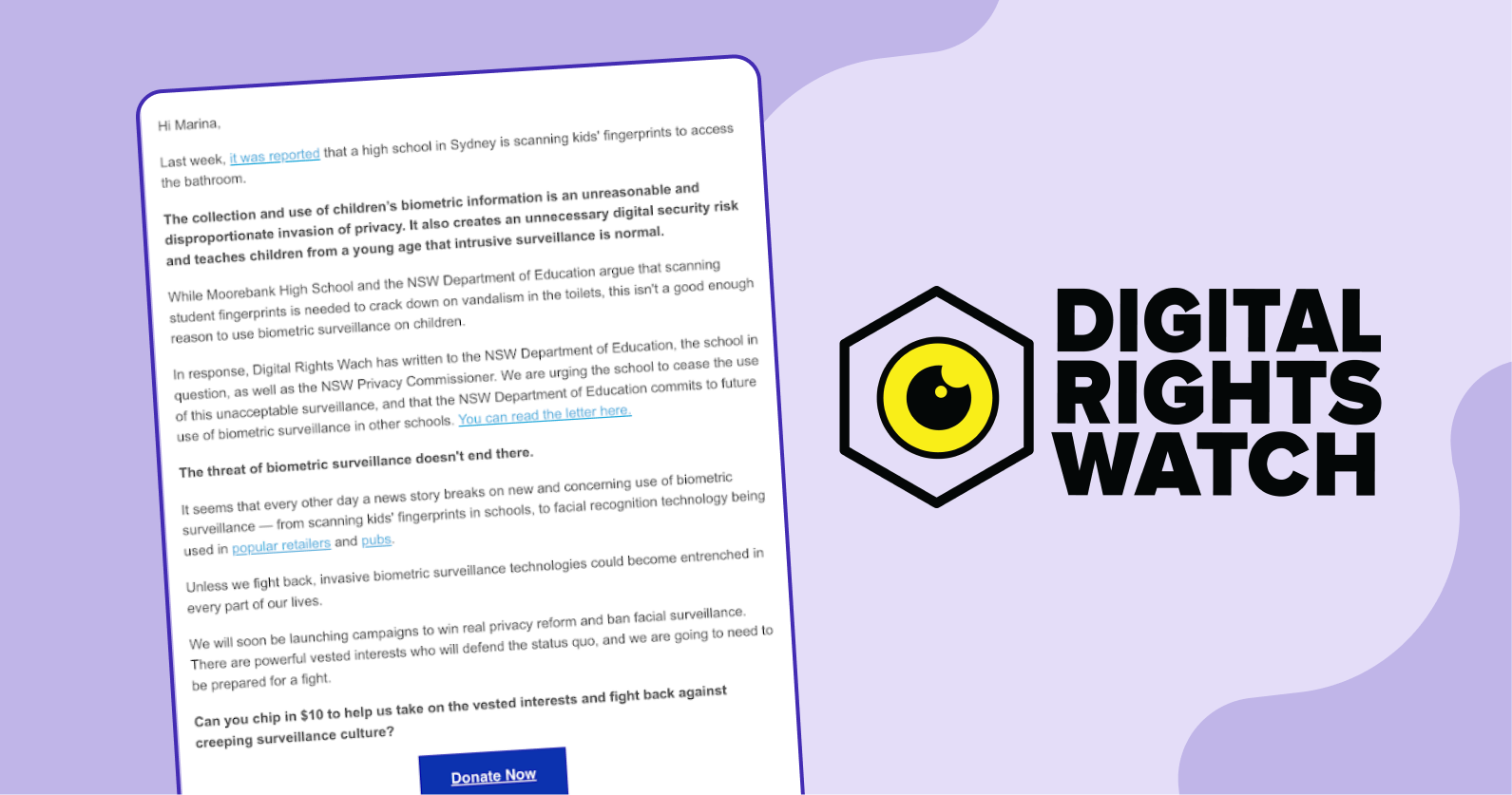
This fundraising letter starts by informing readers that kids’ fingerprints are getting scanned so they can access the bathroom, which definitely sounds like an unreasonable invasion of privacy.
The Digital Rights Watch team clearly explains the reasonings of the high school and NSW Department of Education, then highlights the threats of biometric surveillance. By doing so, they’re creating urgency around the issue.
The email touches on the many qualities that make for a great fundraising letter. It clearly defines a problem, tells a story, and discusses their solution. You’re told that you can “play a critical role” in the campaign and “fight back against creeping surveillance culture.” This letter does a compelling job of urging its recipients to donate and learn more about what’s happening in that Sydney high school, and where else biometrics are being used.
UNHCR Wishes You a Beautiful Diwali
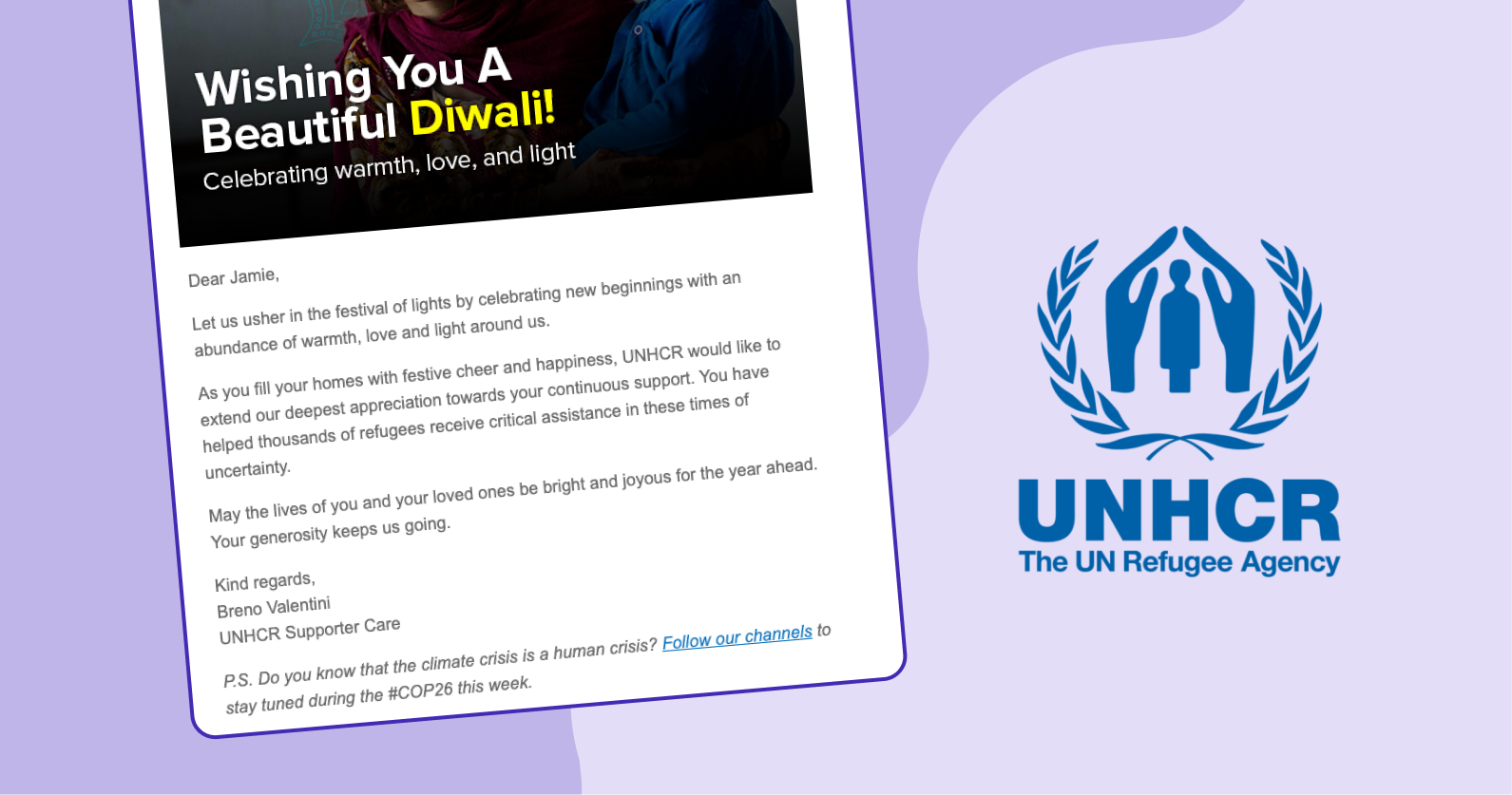
UNHCR’s fundraising letter to a current donor is short and sweet. This personalised letter thanks the reader for their continuous support and reminds them that they’re helping “thousands of refugees receive critical assistance” in uncertain times.
Despite what could’ve been a dire message, the letter has an overwhelmingly positive tone and invites the reader to celebrate “with an abundance of warmth, love and light.”
While this letter doesn’t directly ask for a donation, UNHCR reminds the reader of the people they are to help because of the donor’s “generosity.”
Thank You From The Kids’ Cancer Project
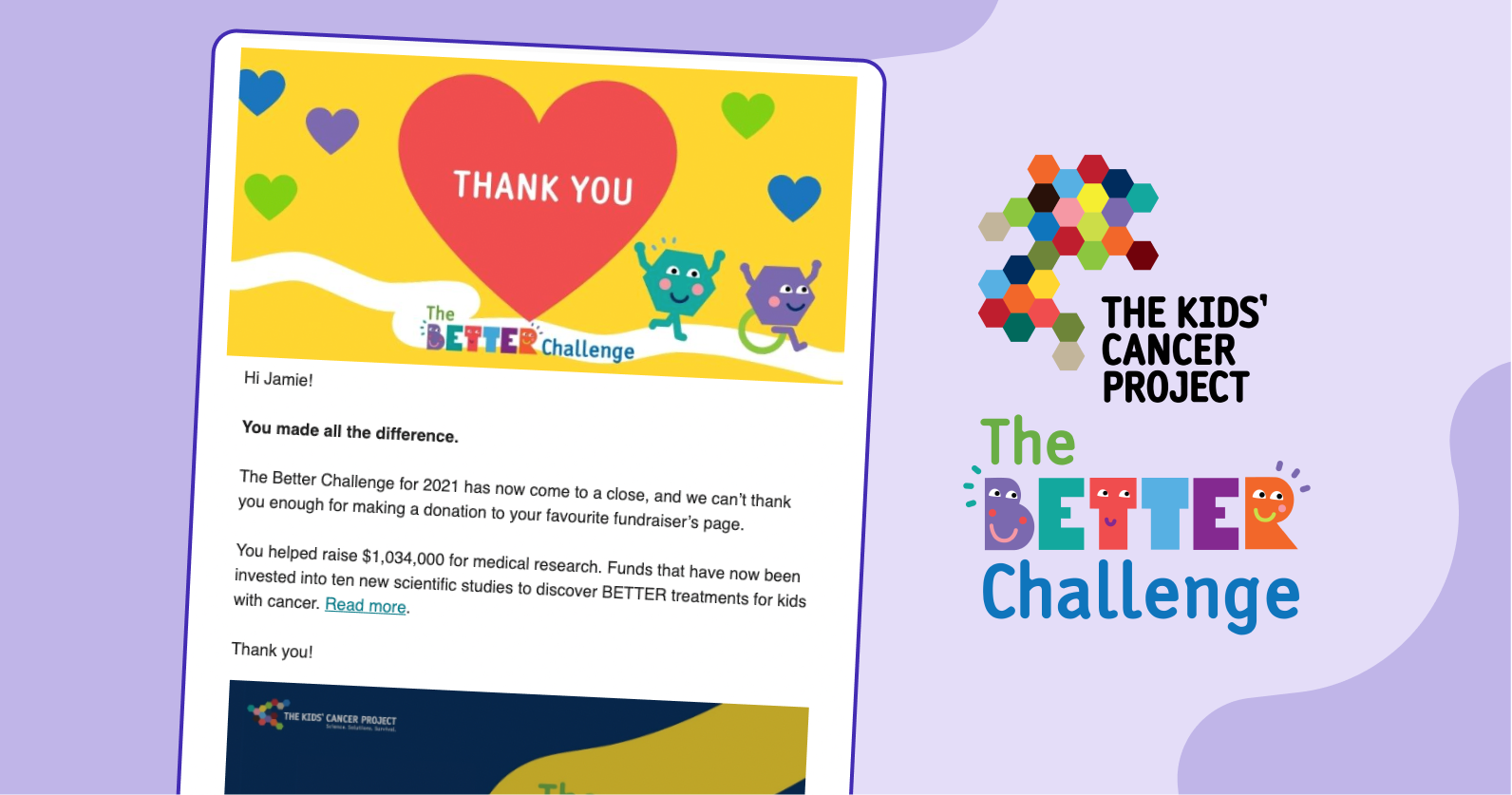
Although their formats can vary from other fundraising letters, thank-you letters often contain many or all the same qualities. This personalised thank-you letter highlights the success of The Better Challenge, a fundraising campaign run by The Kids’ Cancer Project.
The inclusive phrase “You made all the difference” immediately hooks the reader, as they’re celebrated as being part of the solution. The nonprofit then shares the success of their campaign, and that the $1,034,000 AUD raised for medical research has been “invested into ten new scientific studies to discover BETTER treatments for kids with cancer.” Their call-to-action is a link the reader can click on to learn more.
Better yet — the letter does all this in less than 100 words.
Refugee Routes Weekend Ride
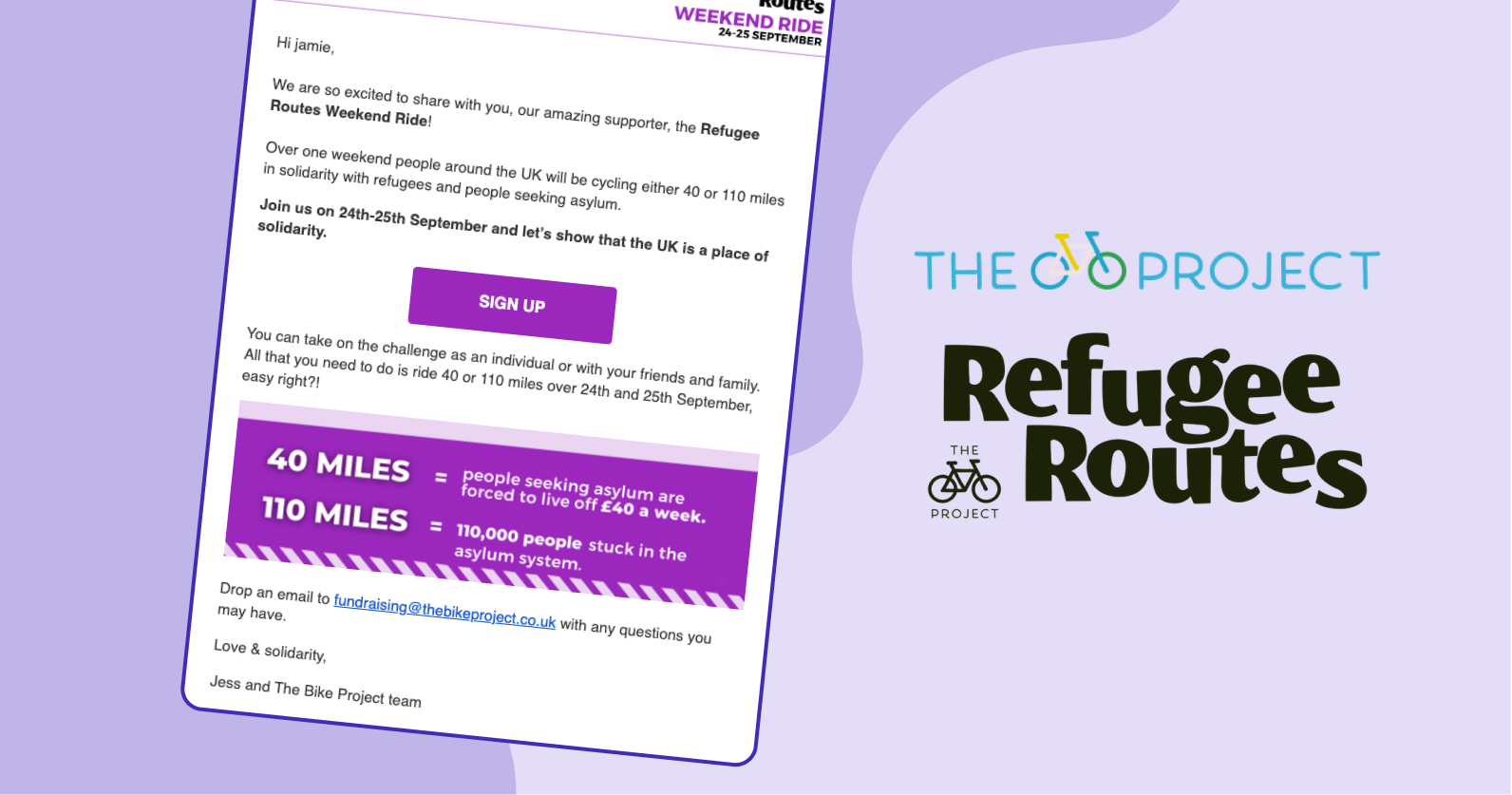
Our third fundraising letter example is from The Bike Project’s Refugee Routes. They invite the reader, their “amazing supporter,” to cycle around the UK for either 40 or 110 miles “in solidarity with refugees and people seeking asylum.”
Why 40 or 110 miles?
Because people seeking asylum are forced to live off £40 a week, and there are 110,000 people stuck in the asylum system. They provide a connection between the challenge and the cause, which adds meaning to their message and is instantly more memorable. The big purple “Sign up” button in the centre of the email doesn’t hurt, either.
Write Your Fundraising Letter With Raisely
With Raisely, you can engage your potential donors and sponsors with a built-in CRM and personalised messages. With our all-in-one fundraising platform, you can also customise your email content by taking advantage of our default template and easy-to-use email builder.Are you ready to start writing amazing fundraising letters? Sign up with Raisely today!
Ready to create your
next campaign?
Anthony Greer is a freelance content writer who crafts consistent, engaging, on-brand copy for nonprofits, real estate, and digital marketing agencies.


